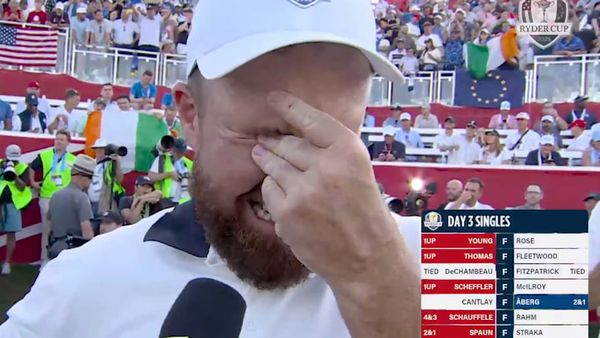Imagine forking out north of $25,000 for a month's supply of the drug keeping you alive. That's what many hepatitis C patients in the U.S. have had to pay for a 28-day course of Gilead Sciences' Epclusa. Canadians paid 35% less for the same treatment, while Australians could buy nearly three months of the drug for roughly the same price.
It's a tough reality. Americans pay nearly three times more for their prescription drugs than patients in Canada. Drugs in the U.S. cost more than four times what they go for in Australia and France.
The Trump administration has a plan to change that. Dubbed the "Most Favored Nation" approach, the strategy aims to bring drug prices paid by Americans down to roughly the same level charged by pharma companies in other countries. President Donald Trump said he aims to get Americans "the best deal" on their prescriptions.
The jury's out on the plan. Proponents say it could significantly lower the cost of drugs and make health care more affordable for ordinary Americans. But critics of the plan and some Wall Street analysts warn Trump's approach could be impractical and open the doors to manipulation. There are worries that it would reduce innovation in the biopharma industry and, eventually, hurt biotech stocks.
Leerink Partners analyst David Risinger says the Trump administration's demands are "extreme."
"We do not think that the industry can deliver what is stated," he said in a recent note to clients. "Such extreme pricing would significantly harm a crown jewel U.S. industry, collapse U.S. investment spending, and undercut U.S. innovation."
Can Trump Lower Drug Prices?
This is Trump's second go-around with Most Favored Nation drug pricing. He signed an executive order on May 12 to tie U.S. drug prices to what other similarly wealthy nations pay. The plan would lower prescription drug prices by 30% to 80% "almost immediately," Trump said on Truth Social.
The order calls for pharmaceutical companies to charge in the U.S. no more than the lowest prices paid by patients in any country that's part of the Organization for Economic Cooperation and Development, or OECD, and has a gross domestic product per capita of at least 60% of the U.S. GDP per capita. The policy also suggests that drugmakers could sell their products directly to patients, bypassing insurance companies and middlemen known as pharmacy benefit managers, or PBMs.
The order only pertains to drugs that don't have a lower-cost generic or biosimilar.
Industry watchers expect the Trump drug price proposal to face intense legal challenges and require congressional support. A similar effort flopped in 2020. If the Most Favored Nation approach does pass muster, it could undermine U.S. leadership in global biomedical innovation. That disruption would happen at a time biotech stocks already are floundering amid a deluge of regulatory changes this year.
It's not surprising that Big Pharma is concerned about a plan that threatens its profits. Companies say lowering prescription drug prices will inevitably hurt their bottom lines and force them to cut R&D investments for the next important drug. This could also inadvertently create more complexity in the system by spurring drugmakers and middlemen to seek ways to game the system and find loopholes.
Impact On Biotech Stocks
In an ironic twist, biotech stocks actually rallied the day Trump issued his executive order. That's because the announcement was vague on the policy details. "All bark" and "little bite," RBC Capital Markets analysts said in a report.
Trump gave Health Secretary Robert F. Kennedy Jr. 30 days to determine the new drug prices and communicate them to the companies. The administration will then set a time for companies to show progress toward reaching the new prices. That deadline has passed. It's unclear what progress has been achieved and how the administration plans to force drugmakers to implement the target prices.
In other words, complying with the Most Favored Nation drug pricing policy appears to be all voluntary for now.
"The order amounts to a strongly worded request that the pharmaceutical industry slash its own profit margins," Atlantic writer Roge Karma said in a May 21 report.
And it's unclear why drug companies would do that, said Benjamin Rome of Brigham and Women's Hospital in Boston.
"The order also mentions facilitating 'direct-to-consumer purchasing programs,'" Rome, a faculty member of the Division of Pharmacoepidemiology and Pharmacoeconomics, told Managed Healthcare Executive. "Most people in the U.S. cannot afford to purchase brand-name drugs directly. They rely on insurance coverage. So even if these programs worked as intended (which is a big if), they would not help most Americans afford their medications."
See The Latest Updates To IBD Stock Watchlists
Most Favored Nation Approach To Drug Prices
There's no debate that prescription drug prices in the U.S. are unusually high.
According to a 2020 report from the Government Accountability Office, a 28-day pack of Gilead's hep C drug, Epclusa, cost $25,018 that year. In comparison, the same package cost $8,668 in Australia and $16,204 in Ontario, Canada's most populous province. In France, a 28-day supply of Epclusa went for $9,211.
It's important to note that those are cash prices and don't include insurance rebates and discounts. Patients with insurance paid roughly 42% less in the U.S. — so $14,437. The GAO notes that's a "substantial" price concession for a drug. But such steep price concessions aren't typical.
A study funded by the Department of Health and Human Services in 2024 found that U.S. consumers pay $2.78 for every dollar paid in other countries for prescription drugs.
The discrepancy between drug prices in the U.S. and abroad is thanks to an incredibly complex system involving insurers and pharmacy benefit managers. Discounts and rebates vary across the system. As a result, patients with different insurance companies often pay different prices for the same drugs. The price negotiations are confidential.
Drug Prices Abroad Are Lower
Trump blamed "freeloading" countries, particularly in Europe, for the disparity. He suggested offsetting lower U.S. drug prices with higher prices abroad. But RBC analysts said contracts are in place abroad, making it difficult, if not impossible, to readily change drug prices.
Javier Palomarez, founder and chief executive of the United States Hispanic Business Council, also cites key differences between the U.S. and other countries when it comes to the availability of drugs. For example, some countries are willing to go without cutting-edge medications.
"When looking at countries like France that currently have price controls in place, they only have access to 48% of new medicines," he said in an email to IBD. "Americans, in contrast, have access to 90% of new medicines."
Stephen Ubl, chief executive of the trade group Pharmaceutical Research and Manufacturers of America, says Trump's administration is placing blame in the wrong place.
"The U.S. is the only country in the world that lets PBMs (pharmacy benefit managers), insurers and hospitals take 50% of every dollar spent on medicines," he said in a statement. "The amount going to middlemen often exceeds the price in Europe. Giving this money directly to patients will lower their medicine costs and significantly reduce the gap with European prices."
Most Favored Nation Policy Is Unclear
It's also unclear what prices the administration will use for its Most Favored Nation approach.
There's the list price, which is publicly available. This is the cash price for prescription drugs before insurance kicks in.
Industry tracker Iqvia keeps tabs on some discounts, but that doesn't give the true net price, says Monica Martin de Bustamante, a senior partner at advisory firm Trinity Life Sciences.
De Bustamante argues that if the policy is based on list prices, it could prompt companies to seek higher list prices abroad while maintaining the lower negotiated net price, according to a William Blair report. If the policy is based on net prices, there's no mechanism by which governments abroad can hike already negotiated prices.
Shams Afzal, managing director at Carnegie Investment Council, said it would be almost impossible for the U.S. government to keep track of drug prices globally for compliance purposes. The policy could also incentivize drugmakers to delay launching new products in other OECD countries, he said.
The Most Favored Nation approach is popular among Americans who are fed up with high drug prices. But the policy itself faces an uphill battle, Afzal said in an email to IBD.
"The case for subsidizing innovation by U.S. consumers and paying 3 to 5 times as much for the same medicine as the rest of the world may have less backers now than ever before," he said. "However, the complex tiered pricing structure and rebate protocols that exist within the industry will likely create large disparities for the final beneficiaries."
How Much Do Americans Pay For Prescription Drugs?
2020 gross prescription drug prices before insurance rebates and discounts
| Drug | Manufacturer | Illness | Supply | U.S. | Australia | Ontario, Canada | France |
|---|---|---|---|---|---|---|---|
| Epclusa | Gilead Sciences | Hepatitis C | 28 days | $25,018 | $8,668 | $16,204 | $9,211 |
| Harvoni | Gilead Sciences | Hepatitis C | 28 days | $31,895 | $8,668 | $18,093 | $13,743 |
| Ibrance 100mg | Pfizer | Cancer | 21 days | $12,811 | $2,095 | $4,325 | $3,176 |
| Imbruvica | Johnson & Johnson | Cancer/GVHD | 90 days | $14,218 | $6,019 | $7,120 | $6,011 |
Source: Government Accountability Office |
|||||||
Will Americans See Lower Drug Prices?
Ultimately, the policy will likely do little to lower drug prices for American consumers, Evercore ISI analyst Umer Raffat said in a client note. Similarly, RBC analysts, citing former health secretary Alex Azar, said the new Most Favored Nation policy doesn't have the legal authority to impact commercial insurance plans.
Instead, the policy will place an "undue burden on pharmaceutical companies," said Palomarez, of the Hispanic Business Council.
Most industry watchers expect Trump's policy to be resolved by the courts, where Most Favored Nation drug pricing has failed in the past.
But Trump has an unexpected accomplice in his corner this time around. Under former President Joe Biden, the Centers for Medicare and Medicaid Services won the right through the Inflation Reduction Act to negotiate the prices of a group of high-cost drugs reimbursed by Medicare each year.
Notably, the previous attempt to implement a Most Favored Nation approach to drug prices failed because it was then illegal for the government to negotiate drug prices. With the IRA in play, there's now a precedent for the government to negotiate prices, William Blair analysts said.
"However, there has not been precedent for threatening price controls and targeted legal action – both of which will be fought in court," Palomarez said. "While Trump may not need all of Congress on board, he will surely have to fight his way through the courts."
Jumpstart Your Investing Skills With IBD Digital
Will Drug Price Controls Hurt Innovation?
Drug companies highlight another potential drawback in imposing a policy to keep drug prices in check: It could put a chill on innovation. Price controls would mean lower revenue and profit. This could force biopharma companies to scale back research and development, which means abandoning experimental medicines, including those that could become blockbusters or treatments for rare diseases.
AstraZeneca agrees with Trump's premise that American patients shouldn't have to shoulder the cost of drug innovation alone. But implementing Most Favored Nation pricing should be done without "stifling the innovation that drives global health advancements," a spokesman said in an email.
Roche, meanwhile, said its plan to invest $50 billion over the next five years to build manufacturing in the U.S. could be at risk due to the new drug pricing regime, according to Reuters.
Palomarez said investors are closely watching whether or not pharma and biotech stocks will be investable following the potential implementation of Most Favored Nation drug prices.
"The White House Council of Economic Advisers reported that federal price-control measures could reduce medicinal research by $200 billion," he said. "This translates into an estimated 135 new medicines that will never come into existence."
Will Biotech Stocks Be Attractive To Investors?
Analysts expect the specter of drug-price controls to weigh on biotech stocks for the near term.
On a year-to-date basis, biotech stocks as a group have slouched about 11%, as of midday trades Friday. In comparison, the S&P 500 has clawed back from a steep decline and managed to eke out a roughly 5% gain. The Nasdaq composite index is also up about 5% and the Dow Jones industrials average has risen more than 3%.
"Overall, pricing will remain an overhang on our sector," UBS analyst Trung Huynh said in an email. "But we see President Trump's tone as relatively positive for the industry with his main goals to 1) increase ex-U.S. prices and 2) PBM reform, both of which could potentially be a tail wind if successful."
Similarly, once the dust settles, RBC analysts expect biotech stocks to rebound.
"Health care will be viewed as more investable and stories with clear differentiation strategies, strong fundamentals, and good commercial opportunities should continue to rise above the downward pressure the sector finds itself in," they said.
Follow Allison Gatlin on X/Twitter at @AGatlin_IBD.







